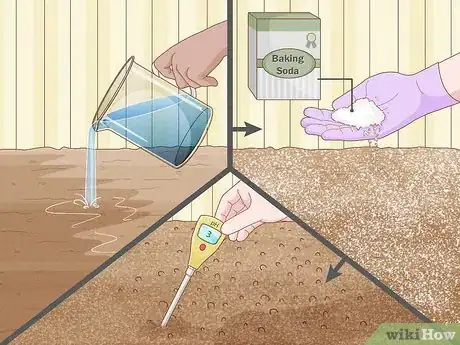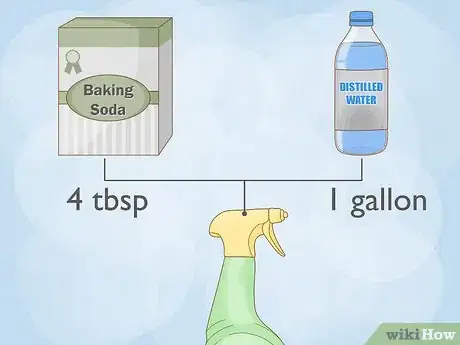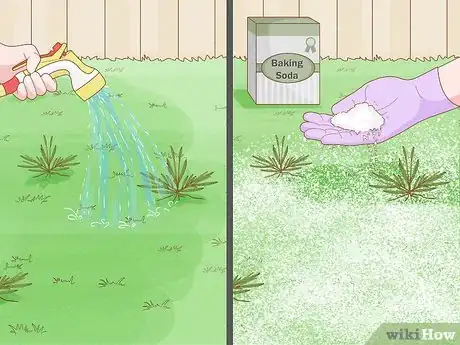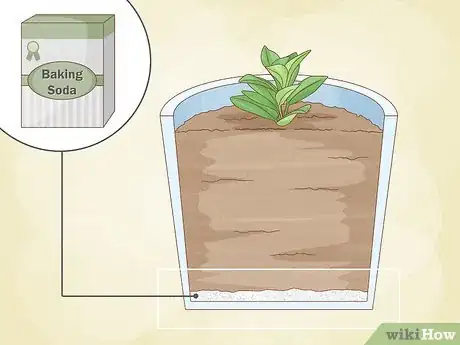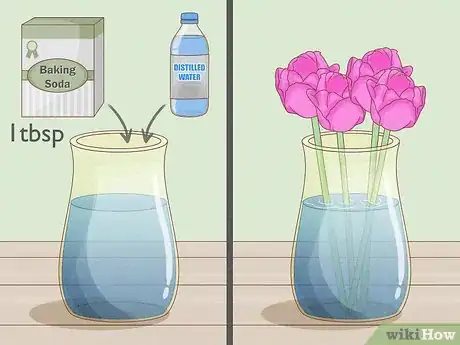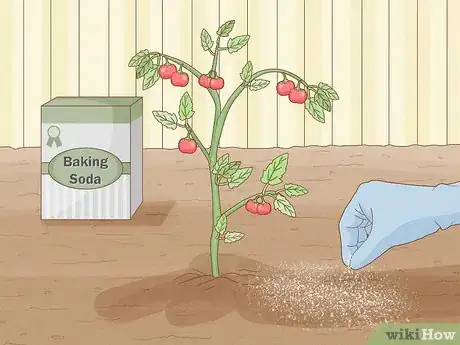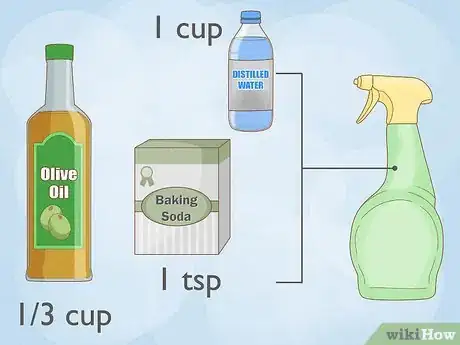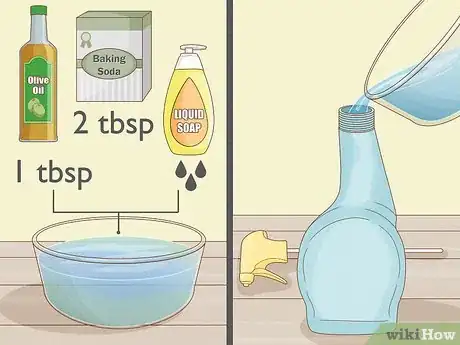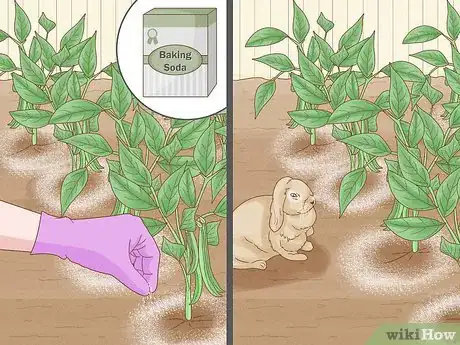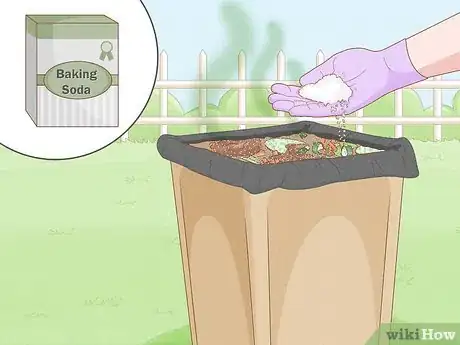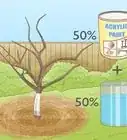This article was co-authored by Ben Barkan. Ben Barkan is a Garden and Landscape Designer and the Owner and Founder of HomeHarvest LLC, an edible landscapes and construction business based in Boston, Massachusetts. Ben has over 12 years of experience working with organic gardening and specializes in designing and building beautiful landscapes with custom construction and creative plant integration. He is a Certified Permaculture Designer, is licensed Construction Supervisor in Massachusetts, and is a Licensed Home Improvement Contractor. He holds an associates degree in Sustainable Agriculture from the University of Massachusetts Amherst.
There are 11 references cited in this article, which can be found at the bottom of the page.
wikiHow marks an article as reader-approved once it receives enough positive feedback. In this case, 94% of readers who voted found the article helpful, earning it our reader-approved status.
This article has been viewed 50,019 times.
There are many uses for baking soda in the garden. You can use it to prevent fungal growth, promote healthy plants, and test your soil’s acidity level. You can keep pests like rabbits, bugs, and slugs at bay using baking soda, too. Baking soda also has many sanitary uses, and can help you get garden produce, furniture, and fixtures clean.
Steps
Ensuring Healthy Plants
-
1Test the Ph level of your soil. Wet your soil a bit with distilled water. Sprinkle a handful of baking soda over the damp soil. If it begins to bubble, your soil is acidic, meaning its pH is below 5, and will not be able to support healthy plant growth.[1]
- If your soil is acidic, you can raise its pH level by mixing ground or powdered lime into the soil. Over time, your soil will become more alkaline. Wood ashes might also help.[2]
- Search online to find out what pH level the plants you plan on growing require before you make any changes to the soil.
-
2Use baking soda as a homemade plant fungicide. Mix four tablespoons of baking soda with one gallon of distilled water.[3] Pour the mixture into a spray bottle. Spray it on or near plants you suspect could be at risk for fungal diseases, especially, for instance, roses and grapes.[4]
- If you have a problem with mildew on your plants, mix one teaspoon baking soda, one quart (one liter) water, and a few drops of liquid soap. Pour this mixture into a spray bottle. Spray the plants that tend to attract mildew.[5]
Advertisement -
3Make a natural fertilizer. Mix one teaspoon baking soda, one teaspoon Epsom salt, half a teaspoon of ammonia, and one gallon (4.5 liters) of water. Pour this mixture in your watering can and apply it just as you would when regularly watering your garden. It’s especially effective at rejuvenating browning plants.[6]
- Check online to see if your plants can tolerate fertilizer before you use one.
-
4Keep crabgrass and weeds at bay. If you have crabgrass or weeds poking up through your mulch or otherwise encroaching on your garden, spray water on them using a spray bottle or hose. Then, sprinkle a thick layer of baking soda over the weeds or crabgrass.[7]
- If you have weeds sprouting from cracks in your patio, pluck them out, then pour boiling water over the spot they were poking out of. Cover the spot heavily with baking soda.
-
5Keep your potted plants fresh. Before transplanting flowers or other plants into pots, coat the bottom with a thin layer of baking soda. Add soil and then add your plant. This will prevent wilting and plant death.[8]
-
6Make your cut flowers last longer. When you’ve clipped some flowers from your garden for home display, plop them in a mixture of distilled water with a spoonful of baking soda. This will prevent them from wilting as fast as they otherwise would.[9]
-
7Use baking soda to sweeten tomatoes. Sprinkle a bit of baking soda on the soil near your tomato plants. The baking soda will get absorbed into the soil and lower its acidity level, making your tomatoes sweeter.[10]
-
8Encourage plants that grow in alkaline soil. Certain flowers thrive in alkaline soil. If you have begonias, hydrangeas, and geraniums, for instance, mix a few spoonfuls of baking soda into your water can before watering them. This will encourage more beautiful blooms and healthy growth.[11]
Managing Pests
-
1Make a natural pesticide. Combine one teaspoon of baking soda, 1/3 cup (79 milliliters) of olive oil, and one cup (237 milliliters) water. Pour the solution in a spray bottle. Aim the spray bottle at the plants you wish to keep insects away from, then squeeze the handle.[12]
- Repeat as necessary. It will be necessary to repeat this treatment after it rains.
-
2Root out insect infestations. If your preventive pesticide spray doesn’t work, you can make a somewhat stronger variant that will eliminate insects. Mix one tablespoon of olive oil, two tablespoons baking soda, and a few drops of liquid soap. Mix the concoction together and pour it into a spray bottle. Spray the liquid liberally about your garden.[13]
- Reapply once every three days. Continue to apply even after the insects are gone to dissuade them from returning.
-
3Get rid of ants. Yet another baking soda insect spray is tailored specifically toward ants. If you have an ant problem in your garden, mix confectioners’ sugar and baking soda in equal amounts. For instance, you might mix five teaspoons of baking soda and five teaspoons of confectioner’s sugar. Sprinkle the powder in the vicinity of the ant hills. The ants will eat the powdered mix and die.[14]
- You might choose to add a spoonful of water to the mix after you’ve combined the sugar and baking soda to help it clump together.
- Don’t use regular sugar, as it won’t cling to the baking soda in the way confectioner’s sugar will.
-
4Keep rabbits away. Sprinkle baking soda around your vegetable garden. Make a thin but visible ring of baking soda around each plant. This will dissuade rabbits from nibbling on them. You will need to apply this mixture regularly, especially after it rains.[15]
-
5Prevent cabbage worms. Mix baking soda and flour in equal proportions. For instance, you might mix one cup of each together. Dust the mixture over cabbage, kale, broccoli, and other plants that tend to attract cabbage worms.[16]
- You will need to apply this mixture regularly, especially after it rains.
-
6Kill slugs. Baking soda is useful for killing slugs. When you see slugs in your garden, just sprinkle them generously in baking soda. This will cause them to shrivel up and die.[17]
Using Baking Soda to Clean
-
1Scrub objects in your garden clean. Baking soda can effectively clean bird baths, clay pots, and garden furniture. Just sprinkle a few spoonfuls of baking soda onto the object you’re interested in cleaning and wipe it down with a damp rag. Rinse the surface with clean water.[18]
- You can also use this method to get produce clean, making it ready for consumption.[19]
-
2Clean your hands. Working in the garden is a dirty job. Even wearing gloves often cannot totally prevent dirt and grime from building up. After spraying your hands down with some water from the garden hose or spigot, sprinkle some baking soda on your hands. Rub them together, not forgetting to scrub within the crevices between each finger or the backs of the hands.[20]
-
3Eliminate nasty odor in your compost. Compost is a mixture of decaying plants and other biodegradable matter. When processed fully, it can be mixed with soil, returning healthy microbes to the soil’s food web and extending its life. Until it’s ready, though, it will be quite stinky. Sprinkle a few spoonfuls of baking soda into your compost bin to soak up the damp stink.[21]
Expert Q&A
Did you know you can get expert answers for this article?
Unlock expert answers by supporting wikiHow
-
QuestionIs baking soda bad for your garden?
 Maggie MoranMaggie Moran is a Professional Gardener in Pennsylvania.
Maggie MoranMaggie Moran is a Professional Gardener in Pennsylvania.
Home & Garden Specialist
-
QuestionWhat does sodium bicarbonate do to plants?
 Maggie MoranMaggie Moran is a Professional Gardener in Pennsylvania.
Maggie MoranMaggie Moran is a Professional Gardener in Pennsylvania.
Home & Garden Specialist
-
QuestionWhat is the difference between baking soda and baking powder?
 Maggie MoranMaggie Moran is a Professional Gardener in Pennsylvania.
Maggie MoranMaggie Moran is a Professional Gardener in Pennsylvania.
Home & Garden Specialist
References
- ↑ http://yourhouseandgarden.com/10-ways-to-use-baking-soda-in-your-garden/
- ↑ Ben Barkan. Garden & Landscape Designer. Expert Interview. 2 June 2020.
- ↑ http://yourhouseandgarden.com/10-ways-to-use-baking-soda-in-your-garden/
- ↑ https://plantcaretoday.com/natural-uses-for-baking-soda-in-the-garden.html
- ↑ http://www.naturallivingideas.com/baking-soda-garden/
- ↑ http://www.naturallivingideas.com/baking-soda-garden/
- ↑ http://www.naturallivingideas.com/baking-soda-garden/
- ↑ http://blessmyweeds.com/10-ways-to-use-baking-soda-in-the-garden-2/9/
- ↑ http://yourhouseandgarden.com/10-ways-to-use-baking-soda-in-your-garden/
- ↑ http://yourhouseandgarden.com/10-ways-to-use-baking-soda-in-your-garden/
- ↑ http://www.naturallivingideas.com/baking-soda-garden/
- ↑ http://www.naturallivingideas.com/baking-soda-garden/
- ↑ http://www.naturallivingideas.com/baking-soda-garden/
- ↑ http://www.naturallivingideas.com/baking-soda-garden/
- ↑ https://books.google.com/books?id=NWtj3jGg12MC&lpg=PA156&pg=PA156#v=onepage&q&f=false
- ↑ http://yourhouseandgarden.com/10-ways-to-use-baking-soda-in-your-garden/
- ↑ http://mothers-home.com/11-ways-to-use-baking-soda-in-your-garden/
- ↑ http://www.naturallivingideas.com/baking-soda-garden/
- ↑ http://mothers-home.com/11-ways-to-use-baking-soda-in-your-garden/
- ↑ http://yourhouseandgarden.com/10-ways-to-use-baking-soda-in-your-garden/
- ↑ http://yourhouseandgarden.com/10-ways-to-use-baking-soda-in-your-garden/
